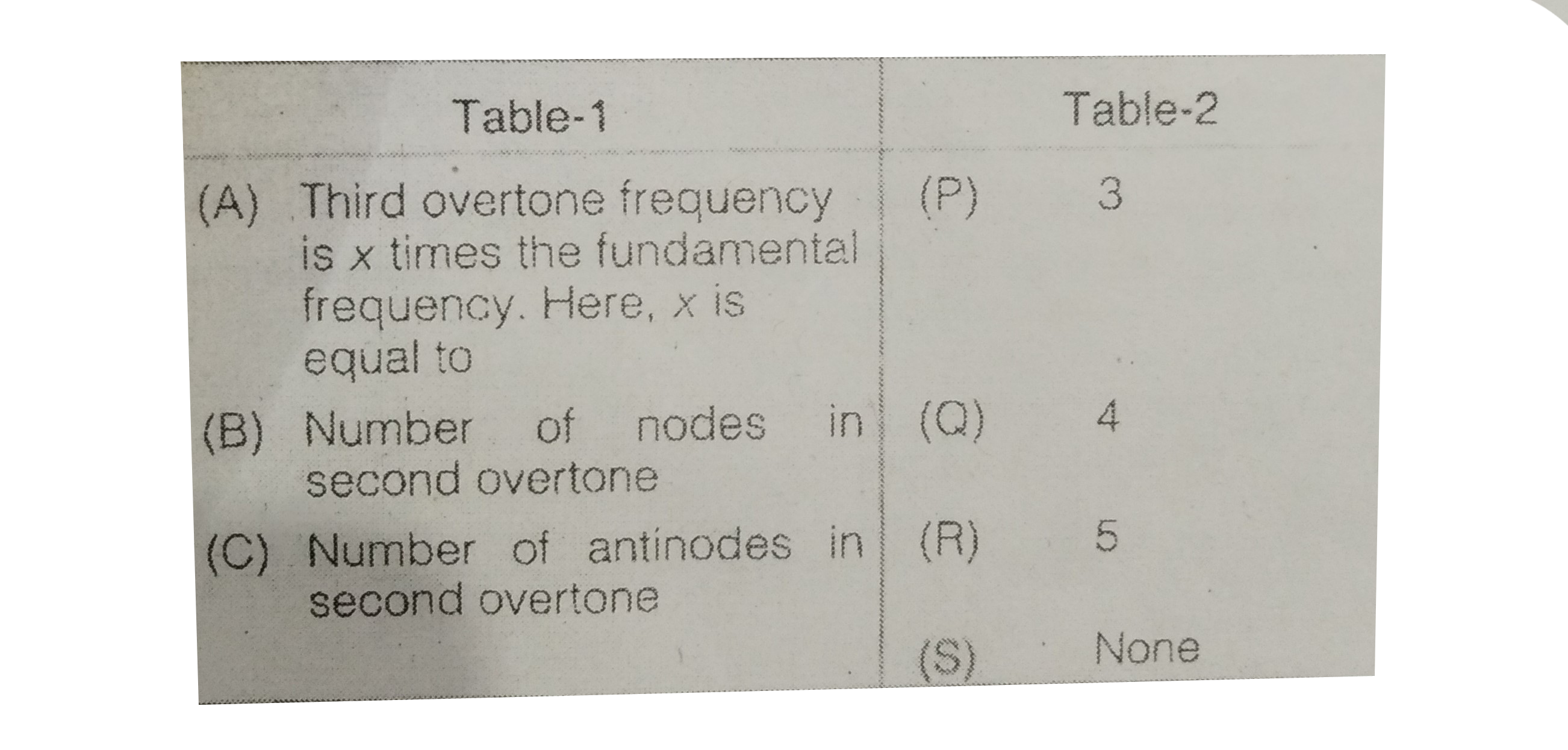How are stationary waves formed in a closed pipe? Explain the various modes of vibrations in a closed pipe and establish the relation between their frequencies.
Step-by-Step Solution
1. Understanding Stationary Waves in a Closed Pipe:
Stationary waves, also known as standing waves, are formed in a closed pipe when sound waves reflect off the closed end of the pipe. The waves traveling in opposite directions interfere with each other, creating regions of constructive and destructive interference.
2. Formation of Nodes and Antinodes:
In a closed pipe, one end is closed (node) and the other end is open (antinode). At the closed end, the air cannot move, leading to a node (minimum amplitude). At the open end, the air can move freely, leading to an antinode (maximum amplitude).
3. Modes of Vibration:
The various modes of vibration in a closed pipe can be described as follows:
- Fundamental Mode (First Harmonic): In this mode, there is one node at the closed end and one antinode at the open end. The length of the pipe (L) is equal to one quarter of the wavelength (λ):
L=λ4
- First Overtone (Third Harmonic): In this mode, there are two nodes and two antinodes. The length of the pipe is equal to three quarters of the wavelength:
L=3λ4
- Second Overtone (Fifth Harmonic): In this mode, there are three nodes and three antinodes. The length of the pipe is equal to five quarters of the wavelength:
L=5λ4
- This pattern continues for higher harmonics.
4. Establishing the Relation Between Frequencies:
The frequency (f) of a wave is related to its wavelength (λ) and the speed of sound (v) in the medium:
f=vλ
For the fundamental mode:
f1=vλ1=v4L
For the first overtone:
f2=vλ2=v4L3=3v4L
For the second overtone:
f3=vλ3=v4L5=5v4L
The frequencies of the harmonics are related as follows:
f2=3f1,f3=5f1
Thus, the frequencies of the harmonics in a closed pipe are in the ratio of 1:3:5:...
Stationary waves, also known as standing waves, are formed in a closed pipe when sound waves reflect off the closed end of the pipe. The waves traveling in opposite directions interfere with each other, creating regions of constructive and destructive interference.
In a closed pipe, one end is closed (node) and the other end is open (antinode). At the closed end, the air cannot move, leading to a node (minimum amplitude). At the open end, the air can move freely, leading to an antinode (maximum amplitude).
The various modes of vibration in a closed pipe can be described as follows:
- Fundamental Mode (First Harmonic): In this mode, there is one node at the closed end and one antinode at the open end. The length of the pipe (L) is equal to one quarter of the wavelength (λ):
L=λ4
- First Overtone (Third Harmonic): In this mode, there are two nodes and two antinodes. The length of the pipe is equal to three quarters of the wavelength:
L=3λ4
- Second Overtone (Fifth Harmonic): In this mode, there are three nodes and three antinodes. The length of the pipe is equal to five quarters of the wavelength:
L=5λ4
- This pattern continues for higher harmonics.
The frequency (f) of a wave is related to its wavelength (λ) and the speed of sound (v) in the medium:
f=vλ
For the fundamental mode:
f1=vλ1=v4L
For the first overtone:
f2=vλ2=v4L3=3v4L
For the second overtone:
f3=vλ3=v4L5=5v4L
The frequencies of the harmonics are related as follows:
f2=3f1,f3=5f1
Thus, the frequencies of the harmonics in a closed pipe are in the ratio of 1:3:5:...
Topper's Solved these Questions
- BOOK - AAKASH SERIESCHAPTER - WAVE MOTION AND SOUNDEXERCISE - EXERCISE (SHORT ANSWER QUESTIONS)13videos
WAVE MOTION AND SOUND
- BOOK - AAKASH SERIESCHAPTER - WAVE MOTION AND SOUNDEXERCISE - EXERCISE (VERY SHORT ANSWER QUESTIONS)60videos
WAVE MOTION AND SOUND
- BOOK - AAKASH SERIESCHAPTER - WAVE MOTION AND SOUNDEXERCISE - PROBLEMS (LEVEL - II)97videos
WAVE MOTION AND SOUND
- BOOK - AAKASH SERIESCHAPTER - WAVE MOTIONEXERCISE - PRACTICE SHEET ADVANCED (INTEGER TYPE QUESTIONS)10videos
WAVE MOTION
- BOOK - AAKASH SERIESCHAPTER - WAVE OPTICSEXERCISE - PROBLEMS (LEVEL - II)33videos
WAVE OPTICS
Similar Questions
Draw diagrams to show the various modes of vibration in (i) an open pipe and (ii) a closed pipe.
View SolutionThe first overtone of an open pipe has frequency n. The first ovetone of a closed pipe of the same length will have frequency
View SolutionFor a closed organ pipe, match the following .
 View Solution
View SolutionThe frequency of the first overtone of a closed organ pipe is the same as that of the first overtone of an open pipe. What is the ratio between their lengths ?
View SolutionDerive an equation for the first mode of vibration of an air column in a closed organ pipe.
View SolutionDerive an equation for the first mode of vibration of an air column in an open organ pipe.
View SolutionIn closed organ pipe at one end-
 View Solution
View SolutionAn open and a closed pipe have same length ratio of frequencies of their nth overtone is
View SolutionIn closed organ pipe at one end…………….
 View Solution
View SolutionThe stationary wave y = 2a sin kx cosωt in a closed organ pipe is the result of the superposition of y = a sin( ωt — kx) and
View Solution

